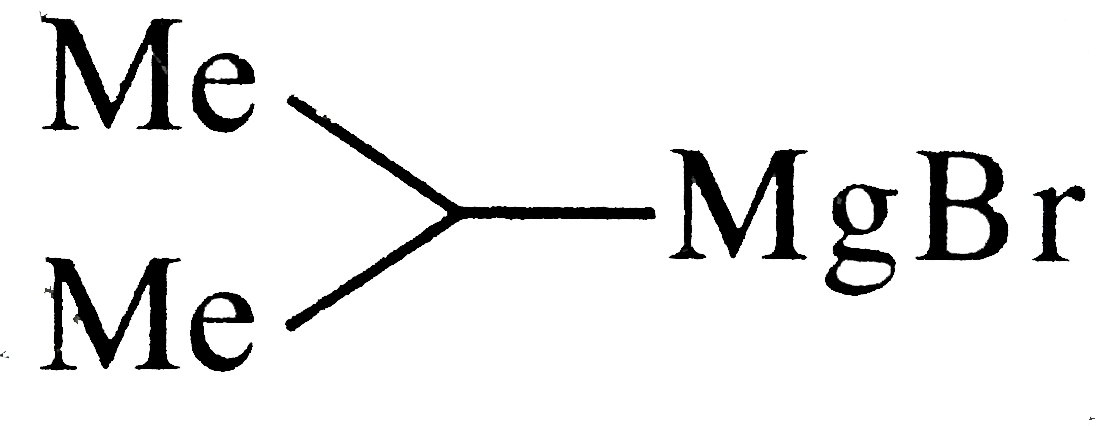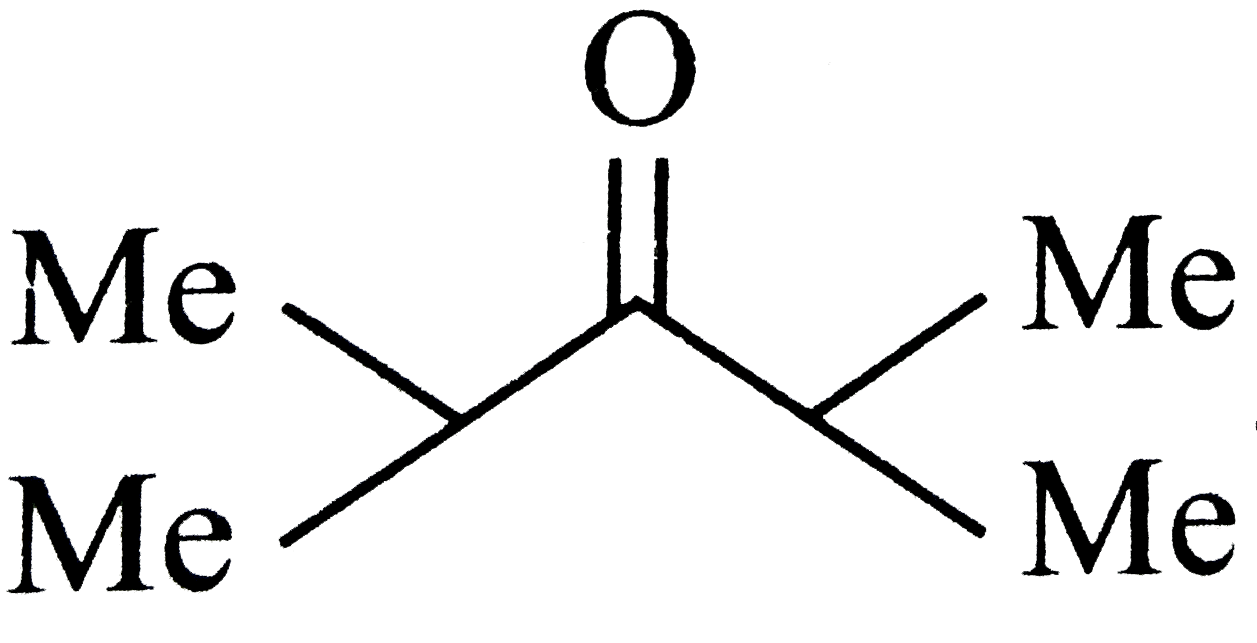When acetaldehyde is treated with Grignard reagent, followed by hydrolysis the product formed is :
Primary alcohol
Secondary alcohol
Carboxylic acid
Tertiary alcohol
The correct Answer is:B
To solve the problem of what product is formed when acetaldehyde is treated with a Grignard reagent followed by hydrolysis, we can break it down into a series of steps.
1. Identify the Reactants:
- Acetaldehyde has the formula CH₃CHO.
- The Grignard reagent can be represented as R-MgBr, where R is an alkyl group.
2. Understand the Reaction Mechanism:
- Grignard reagents act as nucleophiles. The alkyl group (R⁻) from the Grignard reagent will attack the electrophilic carbon atom of the carbonyl group (C=O) in acetaldehyde.
3. Nucleophilic Attack:
- The nucleophilic alkyl group (R⁻) attacks the carbon atom of the carbonyl group in acetaldehyde, leading to the formation of a tetrahedral intermediate. This results in the following structure:
CH₃C(OH)(R)MgBr
- Here, the oxygen atom of the carbonyl group now carries a negative charge (O⁻).
4. Formation of Alkoxide:
- The tetrahedral intermediate can be represented as:
CH₃C(OH)(R)MgBr
- The magnesium bromide (MgBr⁺) interacts with the negatively charged oxygen, forming an alkoxide:
CH₃C(OR)(MgBr)
5. Hydrolysis:
- Upon hydrolysis (addition of water), the alkoxide reacts with water. The magnesium bromide part is replaced by a hydroxyl group (OH):
CH₃C(OH)(R)+MgBrOH
- This results in the formation of a secondary alcohol.
6. Final Product:
- The final product is a secondary alcohol where the structure can be represented as:
CH₃C(OH)R
- The product is a secondary alcohol because the carbon atom to which the hydroxyl group is attached is connected to two other carbon atoms (the methyl group and the alkyl group from the Grignard reagent).
Conclusion:
The product formed when acetaldehyde is treated with a Grignard reagent followed by hydrolysis is a secondary alcohol.
- Acetaldehyde has the formula CH₃CHO.
- The Grignard reagent can be represented as R-MgBr, where R is an alkyl group.
- Grignard reagents act as nucleophiles. The alkyl group (R⁻) from the Grignard reagent will attack the electrophilic carbon atom of the carbonyl group (C=O) in acetaldehyde.
- The nucleophilic alkyl group (R⁻) attacks the carbon atom of the carbonyl group in acetaldehyde, leading to the formation of a tetrahedral intermediate. This results in the following structure:
CH₃C(OH)(R)MgBr
- Here, the oxygen atom of the carbonyl group now carries a negative charge (O⁻).
- The tetrahedral intermediate can be represented as:
CH₃C(OH)(R)MgBr
- The magnesium bromide (MgBr⁺) interacts with the negatively charged oxygen, forming an alkoxide:
CH₃C(OR)(MgBr)
- Upon hydrolysis (addition of water), the alkoxide reacts with water. The magnesium bromide part is replaced by a hydroxyl group (OH):
CH₃C(OH)(R)+MgBrOH
- This results in the formation of a secondary alcohol.
- The final product is a secondary alcohol where the structure can be represented as:
CH₃C(OH)R
- The product is a secondary alcohol because the carbon atom to which the hydroxyl group is attached is connected to two other carbon atoms (the methyl group and the alkyl group from the Grignard reagent).
The product formed when acetaldehyde is treated with a Grignard reagent followed by hydrolysis is a secondary alcohol.
Topper's Solved these Questions
- SAMPLE PAPER 2015BOOK - ICSECHAPTER - SAMPLE PAPER 2015EXERCISE - PART-I QUESTION 1. (ANSWER THE FOLLOWING QUESTIONS :
6 Videos
- SAMPLE PAPER 2015BOOK - ICSECHAPTER - SAMPLE PAPER 2015EXERCISE - PART-II SECTION-A QUESTION 2.
6 Videos
- SAMPLE PAPER 2014BOOK - ICSECHAPTER - SAMPLE PAPER 2014EXERCISE - PART-II (SECTION -C)
21 Videos
- SAMPLE PAPER 2016BOOK - ICSECHAPTER - SAMPLE PAPER 2016EXERCISE - PART-II SECTION-C QUESTION 10.
7 Videos
Similar Questions
Knowledge Check
Select the correct alternative from the choices given:
When acetone is treated with Grignard's reagent, followed by hydrolysis, the product formed is :ASecondary alcoholBTertiary alcoholCPrimary alcoholDAldehydeThe reaction of formaldehyde with Grignard's reagent followed by hydrolysis yields
Aa primary alcoholBa secondary alcoholCa tertiary alcoholDa phenol.The reaction of formaldehyde with Grignard's reagent followed by hydrolysis yields
Aa primary alcoholBa secondary alcoholCa tertiary alcoholDa phenol.
When ethanamide is treated with EtMgBr, followed by hydrolysis, the product is :
View SolutionAlcohols react with Grignard regent to form
View SolutionWhen ethane nitrile is treated with C2H5MgBr, followed by hydrolysis, the product is :
View SolutionWhen ethyl ethanoate is treated with excess of MeMgBr, followed by hydrolysis, the product is :
View SolutionThe reaction of formaldehyde with Grignard's reagent followed by hydrolysis yields
View Solution

 is treated with
is treated with  is treated with
is treated with  followed by hydrolysis, the product is :
followed by hydrolysis, the product is :